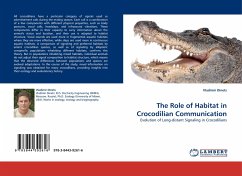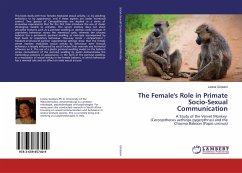All crocodilians have a particular category of signals used as advertisement calls during the mating season. Each call is a combination of a few components with different physical properties, such as body postures, vocal calls, headslaps, and infrasound vibrations. These components differ in their capacity to carry information about the animal's status and location, and their use is adapted to habitat structure. Vocal sounds are used more in fragmented aquatic habitats where they are more effective, while slaps are used more in continuous aquatic habitats. A comparison of signaling and preferred habitats by extant crocodilian species, as well as of signaling by allopatric conspecific populations inhabiting different habitats, confirms this theory. But in populations inhabiting mixed habitats, individual animals do not adjust their signal composition to habitat structure, which means that the observed differences between populations and species are evolved adaptations. In the course of the study, novel information on signaling was obtained for many crocodilians, providing insights into their ecology and evolutionary history.








